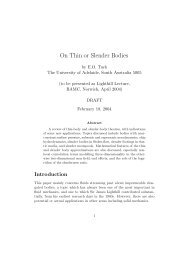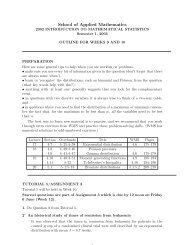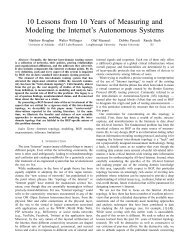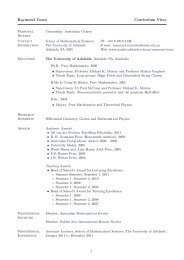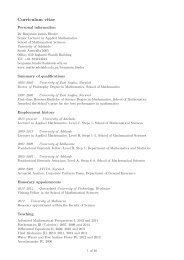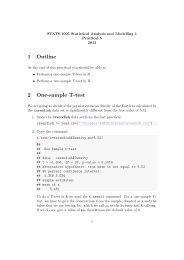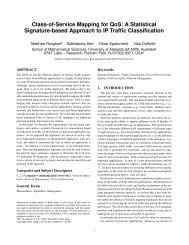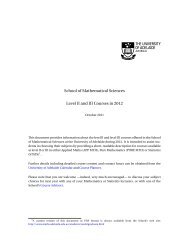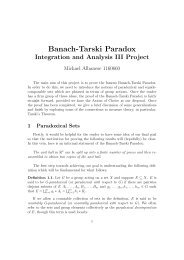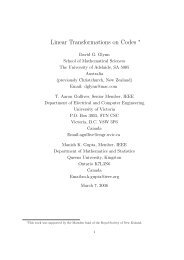PDF of Lecture Notes - School of Mathematical Sciences
PDF of Lecture Notes - School of Mathematical Sciences
PDF of Lecture Notes - School of Mathematical Sciences
You also want an ePaper? Increase the reach of your titles
YUMPU automatically turns print PDFs into web optimized ePapers that Google loves.
1. DISTRIBUTION THEORY<br />
Consider the identity:<br />
n∑<br />
n∑<br />
(X i − µ) 2 = (X i − ¯X) 2 + n( ¯X − µ) 2<br />
i=1<br />
i=1<br />
(subtract and add ¯X to first term)<br />
⇒<br />
n∑<br />
i=1<br />
(X i − µ) 2<br />
σ 2 =<br />
n∑<br />
i=1<br />
(X i − ¯X) 2<br />
σ 2 +<br />
( ) 2 ¯X − µ<br />
σ/ √ n<br />
and let R 1 =<br />
R 2 =<br />
n∑ (X i − µ) 2<br />
i=1<br />
n∑<br />
i=1<br />
σ 2<br />
(X i − ¯X) 2<br />
σ 2 =<br />
(n − 1)S2<br />
σ 2<br />
R 3 =<br />
( ) 2 ¯X − µ<br />
σ/ √ n<br />
If M 1 , M 2 , M 3 are the MGFs for R 1 , R 2 , R 3 respectively, then,<br />
M 1 (t) = M 2 (t)M 3 (t) since R 1 = R 2 + R 3<br />
with R 2 and R 3 independent<br />
↓ ↓<br />
depends depends only<br />
only on on ¯X<br />
Next, observe that R 3 =<br />
( ) 2 ¯X − µ<br />
σ/ √ ∼ χ 2 1<br />
n<br />
S 2<br />
⇒ M 2 (t) = M 1(t)<br />
M 3 (t) .<br />
⇒ M 3 (t) =<br />
1<br />
(1 − 2t) 1/2 ,<br />
69





